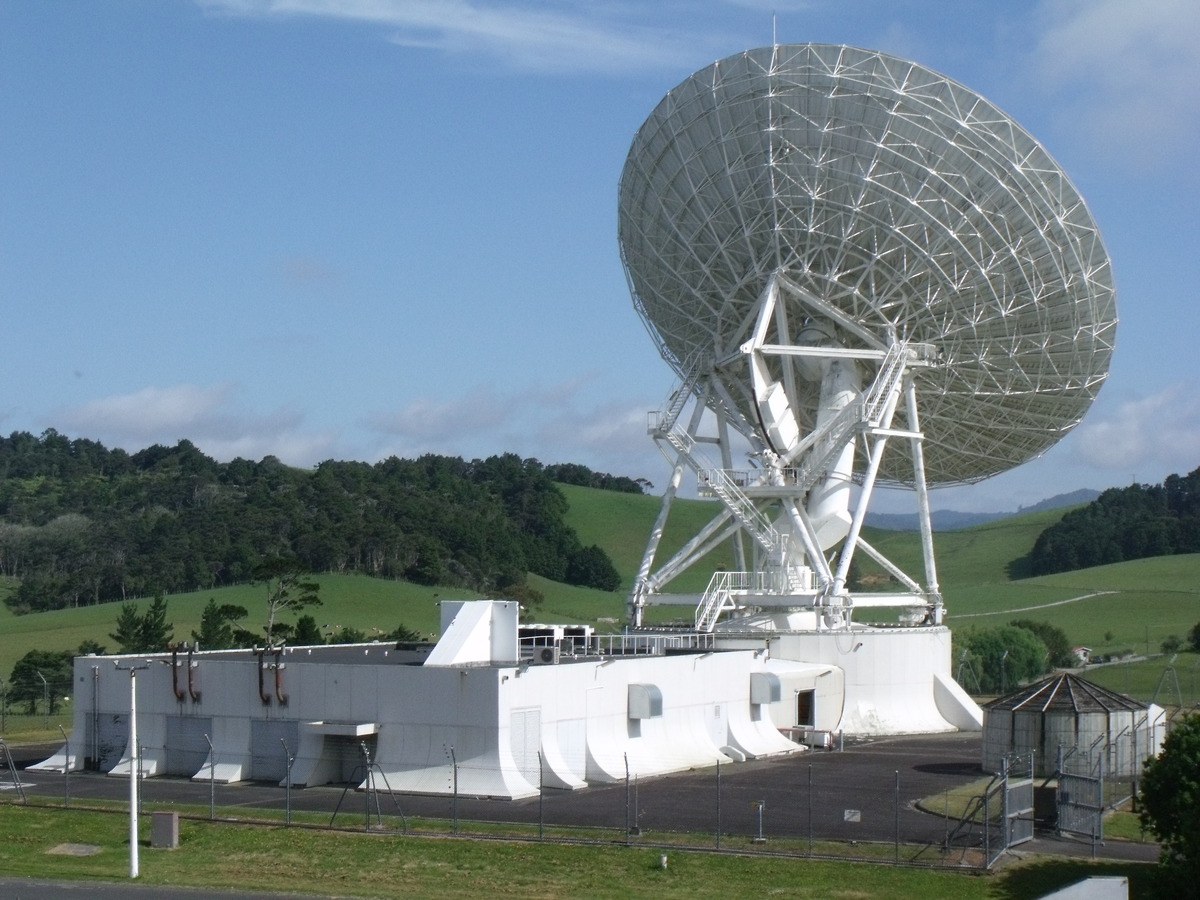New life for radio astronomy station
New Zealand’s tiny community of radioastronomers was dealt a major blow last year when costing cutting at AUT saw its research operations at the Warkworth Satellite Earth Station shut down.
Those cuts has since spread to most of the country’s universities as they grapple with lower domestic student enrollments and cost pressures leading many in academia and beyond to question what the future of the tertiary education sector is.
The Herald revealed in March how the haphazard move to close the radio observatory caused a minor diplomatic incident when government officials realised that doing so could disrupt global networks that support GPS.

Warkworth Satellite Earth Station. Source: Wikipedia
But a glimmer of hope came this week as it emerged that Invercargill-based SpaceOps NZ said it had concluded negotiations to take over AUT’s radio astronomy operations at the Warkworth site, which is owned by telecoms provider Spark.
SpaceOps, is a fully owned subsidiary of Southland Regional Development Agency, and provides telecommunications to spacecraft orbiting 400 to 600 kilometres above the Earth from its Awarua ground station facilities in Southland, has been in business since 2008.
It has licensed use of the Warkworth Station Site 2 from Spark and purchased the AUT antenna at the station as part of the deal.
“By tuning into radio waves emitted by some of the most distant objects in the universe, the 12 metre AUT antenna at the station is used to pinpoint New Zealand to within a couple of millimetres,” says Robin McNeill, SpaceOps NZ’s chief executive.
“Its companion 30-metre diameter antenna, owned by Spark and to be operated by SpaceOps NZ, will continue to map the South Spiral Arm of the Milky Way.”
AUT staff that run the station have also joined the SpaceOps NZ team. The Ministry of Business, Innovation and Employment has been paying the operating costs of the observatory since Christmas, when AUT wound down its presence there. The 30-metre radio telescope has been operating there since 2014.
SouthPAN in development
The continued operation of the radio telescope means radio astronomy has a future in New Zealand. SpaceOps for its part gains access to additional infrastructure to support low Earth orbit satellites.
The company in March SpaceOps said it would expand its Awarua Ground Station to include a satellite uplink centre, part of the Southern Positioning Augmentation Network (SouthPAN), being developed as a partnership between Toitū Te Whenua Land Information New Zealand (LINZ) and Geoscience Australia.
“Through a space- and land-based network, SouthPAN will enhance the accuracy and reliability of positioning services like GPS to as little as 10 centimetres, greatly improving on the current level of around five to ten metres,” Minister for Land Information Damien O’Connor said at the time.
Two 11-metre antennas are being built by Lockheed Martin Australia at Awarua that will link to a control centre in Invercargill, also hosted by SpaceOps NZ. An independent report has estimated the quantified benefits of SouthPAN to New Zealand at $864m over 20 years.
